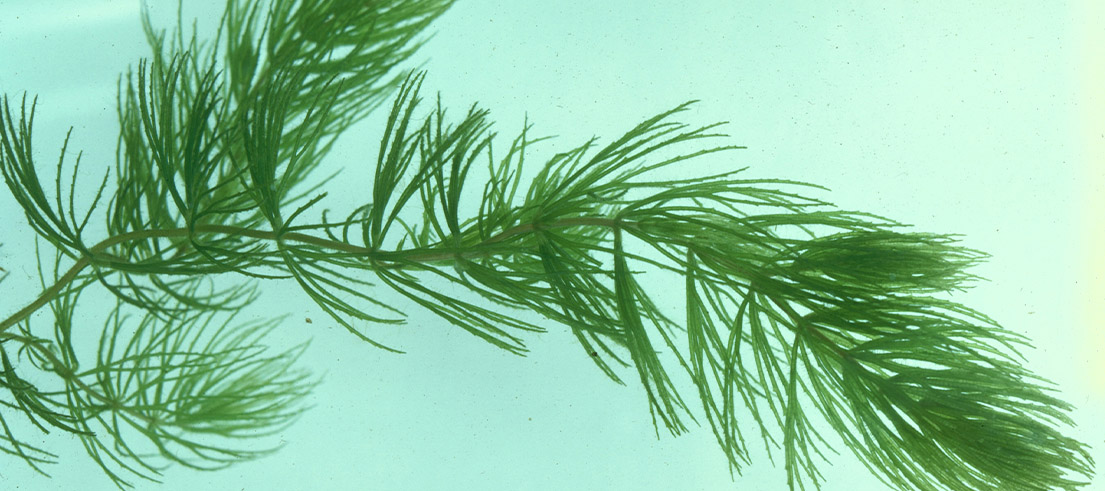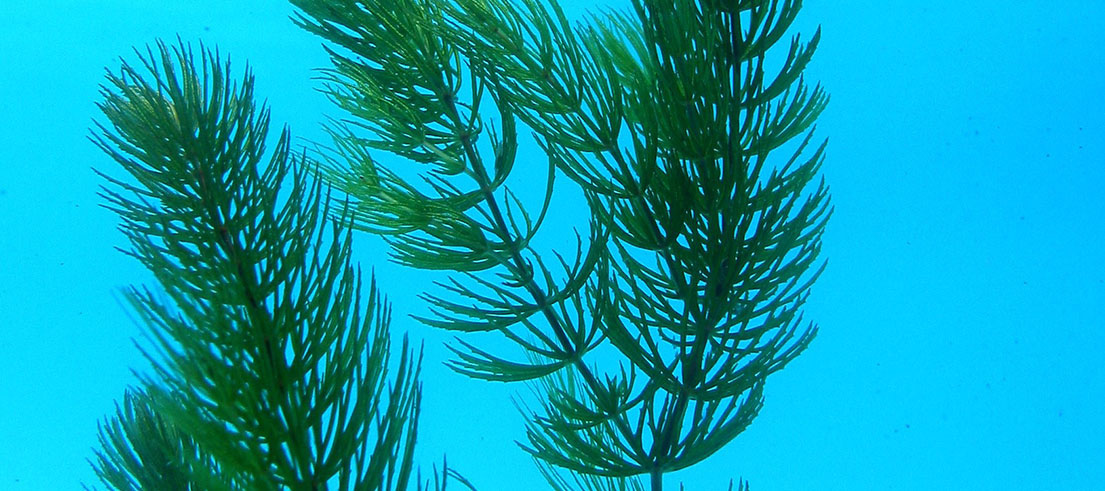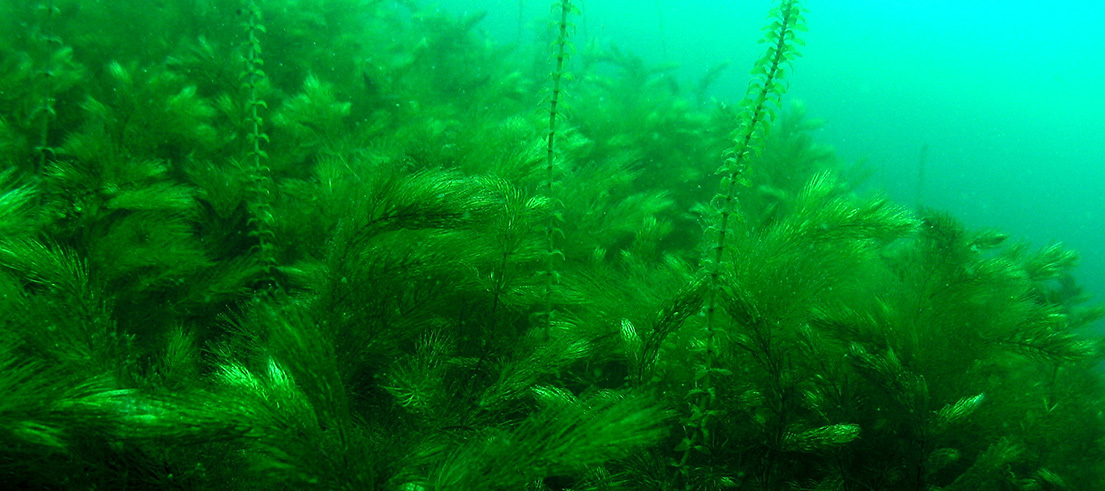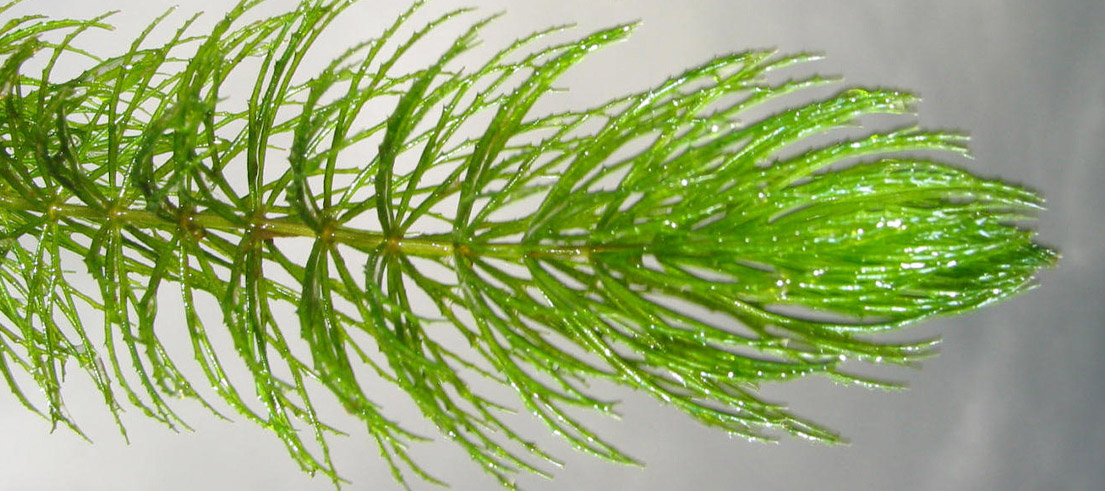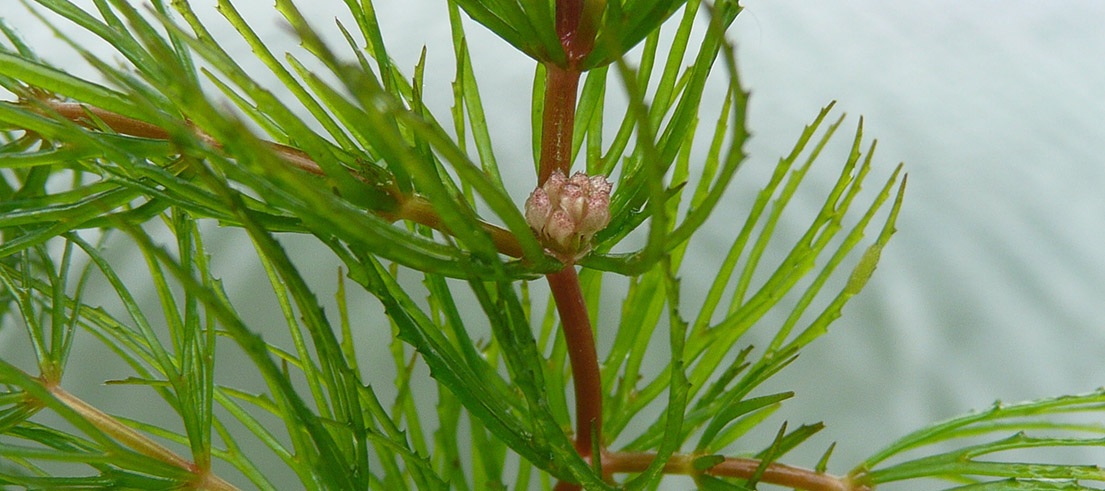A submerged aquatic plant no taller than seven metres that forms free-floating mats and displaces native vegetation and increases flooding risk.
Description
- Stems are branched and may anchor to sediment or form free-floating mats.
- Leaves are long, narrow, branched and whorled, with complex architecture. Flowers are minute.
- Vegetative spread from stem fragments, dispersed by water.
- Human-mediated dispersal through contamination of boats, fishing gear and machinery and deliberate cultivation.
- Habitats include freshwater bodies less than 15.5m deep and drainage ditches.
What you need to know
Forms dense stands and displaces native submerged vegetation down to 15m depth. Alters water flow, increases flooding risk, and impedes recreational access to water bodies. Likely to negatively impact crayfish/kōura.
Management approach
This is a declared pest managed under the Canterbury Regional Management Plan 2018 – 2038 (PDF file, 10.6MB) within the exclusion programme.
Exclusion
Pests in the exclusion programme are not known to be established in Waitaha/Canterbury. If these pests were to become widely established, their impacts could be severe. Therefore, early intervention by preventing their establishment is a cost-effective management approach.
The community should make us aware of any hornwort plants in Waitaha/Canterbury.
Hornwort is also declared an unwanted organism by the Ministry for Primary Industries (MPI) because it is capable of causing harm to the natural environment, physical resources or human health in Aotearoa/New Zealand.
These species pose a high risk to our environment, economy, recreation, and cultural values.
Rules
Any species declared a pest cannot be sold or be in a place where plants are being sold. Pest plants cannot be propagated, bred, multiplied, communicated, released, caused to be released, or otherwise spread.
Control
Do not attempt to undertake control of hornwort yourself. Report any sightings to us.
If you've been in a waterway and plan to move to another within 48 hours, you must clean all your gear that has been wet using the 'Check, Clean, Dry' method.
It's vital that everyone uses the Check, Clean, Dry method on all equipment and vessels to stop freshwater pests.

